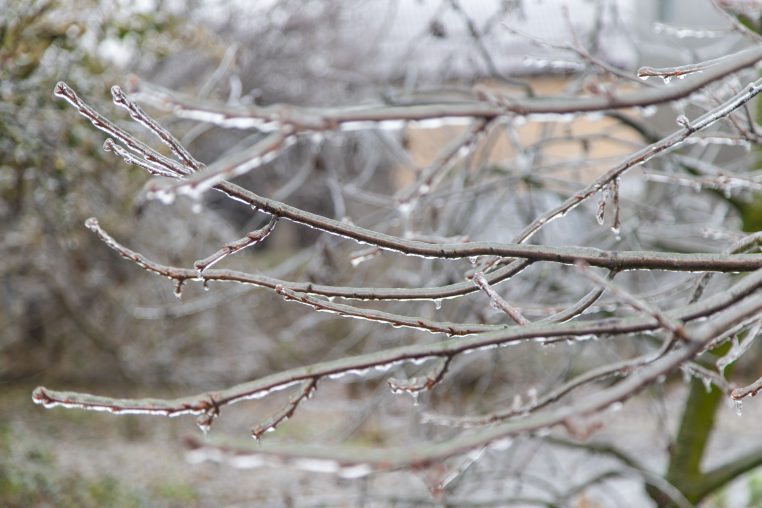When the wind is howling, the snow is piling up, and the ice is turning your yard into a skating rink, life can grind to a halt before you realize it. Maybe you’re sipping coffee one moment, and the next, you’re hearing that ominous crack of a tree branch sagging under an icy burden—or worse, the pop of a pipe somewhere in your basement. Winter storms don’t wait for you to be ready, and they don’t give you a polite heads-up when they’re about to knock out your power or strand you in traffic. Whether you’re facing a textbook ice storm, plummeting temperatures that threaten your pipes, or slippery roads that send the most experienced drivers skidding into the ditch, your best bet is to be prepared.
The goal of this article is to help you do just that: to identify winter weather problems before they happen, plan for them in advance, and respond calmly and effectively when the snow and ice start taking over. In our previous power outage article, we introduced Bob (unprepared, fumbling for candles) and Joe Prepper (calm, lights on, enjoying a hot meal). In this article, we’re going to expand that conversation. Winter storms can be nasty business, but there’s plenty you can do to make sure you stay warm, well-fed, and in control—even if it looks like a frozen tundra outside.
Let’s dive in.
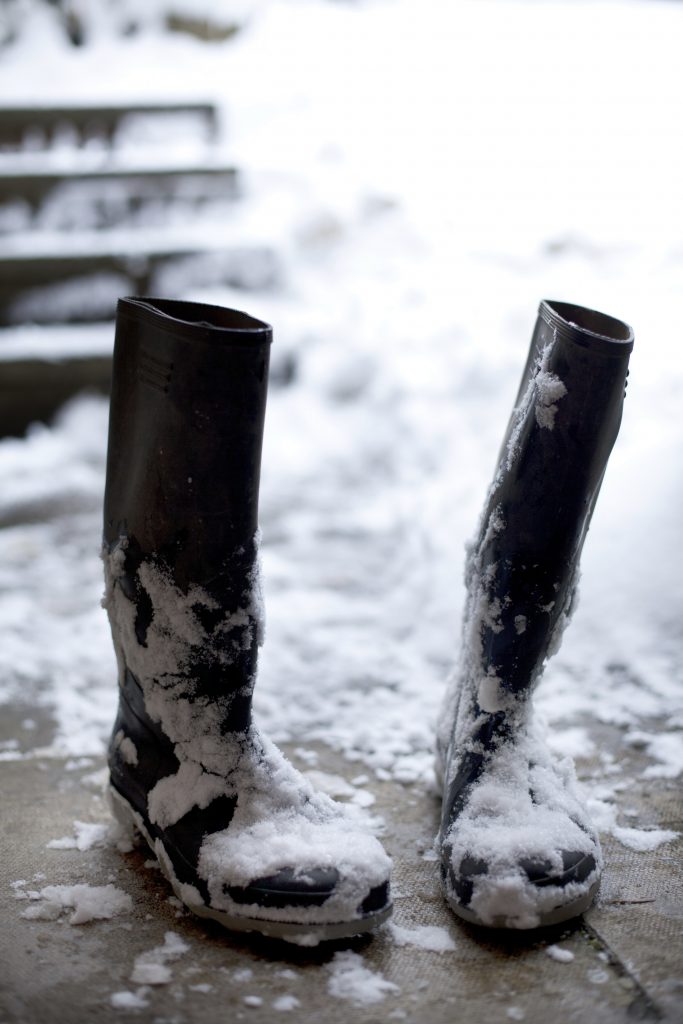
Identifying Winter Weather Hazards
A lot of folks don’t take winter seriously until they’re scraping an inch of ice off their windshield before work. But the first step to solving problems is spotting them a mile away—before they decide to pay you a visit. Winter storms come in various forms, each capable of delivering a world of hurt if you’re not ready. Here are some of the heaviest hitters:
Ice Storms
- What They Are: Ice storms happen when freezing rain accumulates on everything from tree branches to power lines. The result is a thick glaze of ice that adds incredible weight to overhead structures and turns roads into skating rinks.
- Common Impacts: Downed power lines (leading to outages), snapped branches blocking roads or crashing onto roofs, and extremely slick walkways that send folks to the ER with broken bones.
- Key Prep Points: Trim your trees beforehand, secure loose outdoor objects, and be ready for potential extended power outages.
Heavy Snow and Blizzard Conditions
- What They Are: Thick blankets of snow that can drop several feet in a short span, often paired with high winds (which create drifts that can bury cars and block roads).
- Common Impacts: Reduced visibility, impassable roads, and that dreaded scenario where you shovel your driveway only to wake up and find it completely filled again.
- Key Prep Points: Keep a good snow shovel, invest in a snowblower if possible, and make sure you have enough supplies in case you can’t get to the store for a few days.
Black Ice and Slippery Conditions
- What It Is: A near-invisible layer of ice on roadways or sidewalks. You might only realize it’s there when your vehicle fishtails or your feet go out from under you.
- Common Impacts: Increased accident rates, vehicle damage, personal injury from falls.
- Key Prep Points: Drive slowly, keep salt or kitty litter handy to sprinkle on steps and walkways, and wear traction devices (like ice cleats) if walking in treacherous conditions.
Frigid Temperatures (Deep Freeze)
- What They Are: When the mercury drops well below freezing for an extended period, typically accompanied by biting wind chills.
- Common Impacts: Hypothermia, frostbite, frozen and burst pipes, engine trouble in vehicles.
- Key Prep Points: Dress in layers, insulate pipes, and consider block heaters for your vehicle if you live in extremely cold regions.
High Winds and Whiteout Conditions
- What They Are: High winds can accompany snow or ice storms, drastically reducing visibility. Sometimes referred to as “whiteout” conditions.
- Common Impacts: Disorientation while driving or even walking, snowdrifts that can cover entire vehicles or obscure road edges.
- Key Prep Points: Stay put if at all possible, keep a charged phone and let someone know your travel plans if you must be on the road.
Secondary Hazards
- Fallen Trees and Branches: Especially likely with ice accumulation.
- Collapsed Roofs: Heavy snow adds significant weight.
- Carbon Monoxide Poisoning: Using improper heating methods in enclosed spaces.
- Power Surges: When electricity is restored after an outage, anything still plugged in could fry if you’re not careful.
Identifying these hazards well before winter hits allows you to plan your strategy, gather the right supplies, and be the “Joe Prepper” of your neighborhood—cool, calm, and collected even if everyone else is panic-buying toilet paper.
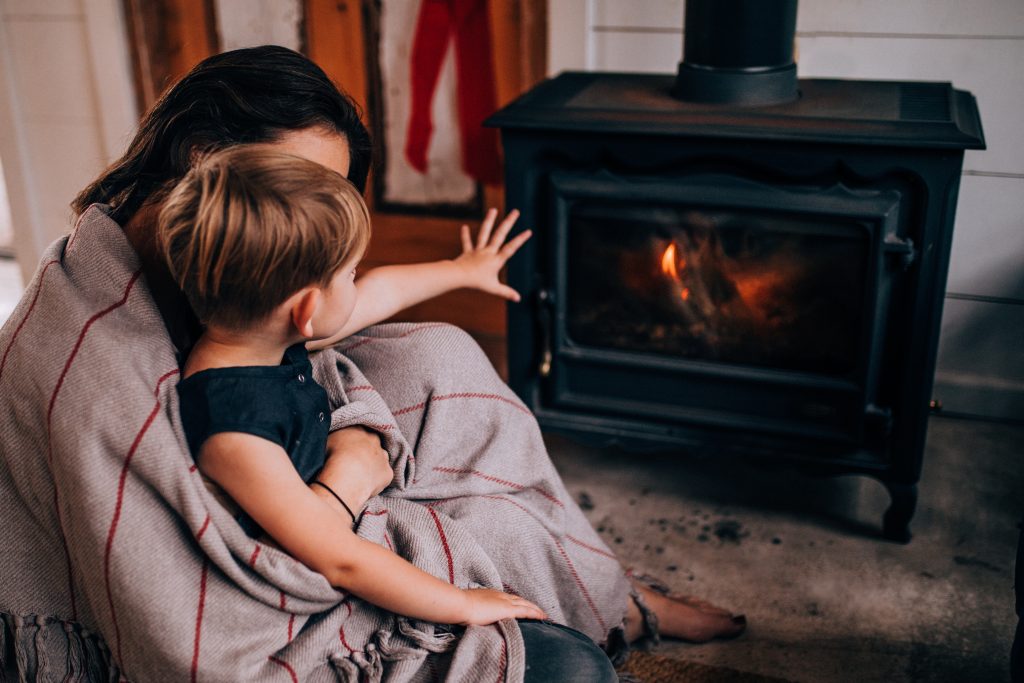
Preparing Your Home: Keeping Warm and Protecting Pipes
If you’ve ever stepped into an unheated bedroom in the dead of winter, you know how quickly those goosebumps rise on your arms. Now imagine your entire house is that cold. When the power’s out or your furnace can’t keep up, you need a plan to maintain a safe temperature. The earlier you take action, the better off you’ll be.
Home Insulation Basics
- Seal Drafts and Leaks: Walk around doors and windows and feel for any cold air sneaking in. Caulk or weather-strip these gaps to keep the heat in and the cold out.
- Insulate Attics and Basements: Heat rises, so a poorly insulated attic can be a major source of heat loss. Basements, meanwhile, can let in cold from below.
- Use Heavy Curtains or Blankets: Thick draperies can help keep warm air from escaping through windows. In a pinch, you can even tack up spare blankets over your windows.
Backup Heat Sources
When the grid goes down, your furnace might go with it (unless you’re on a gas furnace with a manual ignition or have a battery back-up for the blower). Here are some go-to backup methods:
- Wood-Burning Stove: A tried-and-true method for heat (and limited cooking). Ensure your chimney is cleaned annually and you have a safe setup.
- Kerosene Heaters: Provide a surprising amount of heat, but be sure to crack a window for ventilation. Carbon monoxide is no joke.
- Propane Heaters (Mr. Heater, Buddy Heaters, etc.): Again, ventilation is critical. Check the manufacturer’s instructions, and always have a CO detector.
- Fireplace: Traditional, but not always as efficient unless it’s well-designed.
- Pellet Stove: Requires electricity to feed pellets, so a small generator or battery backup helps here.
Safety Note: If you plan on using any combustion heater, have a functioning carbon monoxide detector on every level of your home. CO is colorless, odorless, and lethal.
Protecting Your Pipes
Frozen pipes can lead to flooding and thousands of dollars in repairs. Luckily, some preventive steps go a long way:
- Insulate Exposed Pipes: Wrap them in foam or fiberglass insulation sleeves. Pay extra attention to those running through unheated areas like garages or crawl spaces.
- Keep a Trickle of Water Running: When temps get dangerously low, let a faucet or two drip. Moving water is less likely to freeze.
- Open Cabinet Doors: Allow warm air to circulate around under-sink plumbing, particularly on external walls.
- Know Where Your Shut-Off Valve Is: If the worst happens, you want to shut off the water quickly to minimize damage.
Gathering “Blizzard Blankets”
This is my term for any and all items that keep you warm and cozy during a winter storm. Throw them all in one dedicated closet or chest so you can grab them quickly if the temperature in the house drops.
- Extra Blankets and Comforters: Layers are your friend.
- Emergency Mylar Blankets: They’re cheap, pack small, and reflect your body heat back at you.
- Thermal Underwear and Wool Socks: This is your first line of defense against losing body heat.
Setting Up a “Warm Room”
If the power is out and you only have limited heating capability:
- Pick a Single Room: Ideally one on the main level with few windows or an upper room if heat rises better in your home.
- Seal It Off: Hang blankets or plastic sheeting over doors and vents to keep heat contained.
- Bunk Together: Body heat is a wonderful thing—get everyone (including the pets) in the same room.
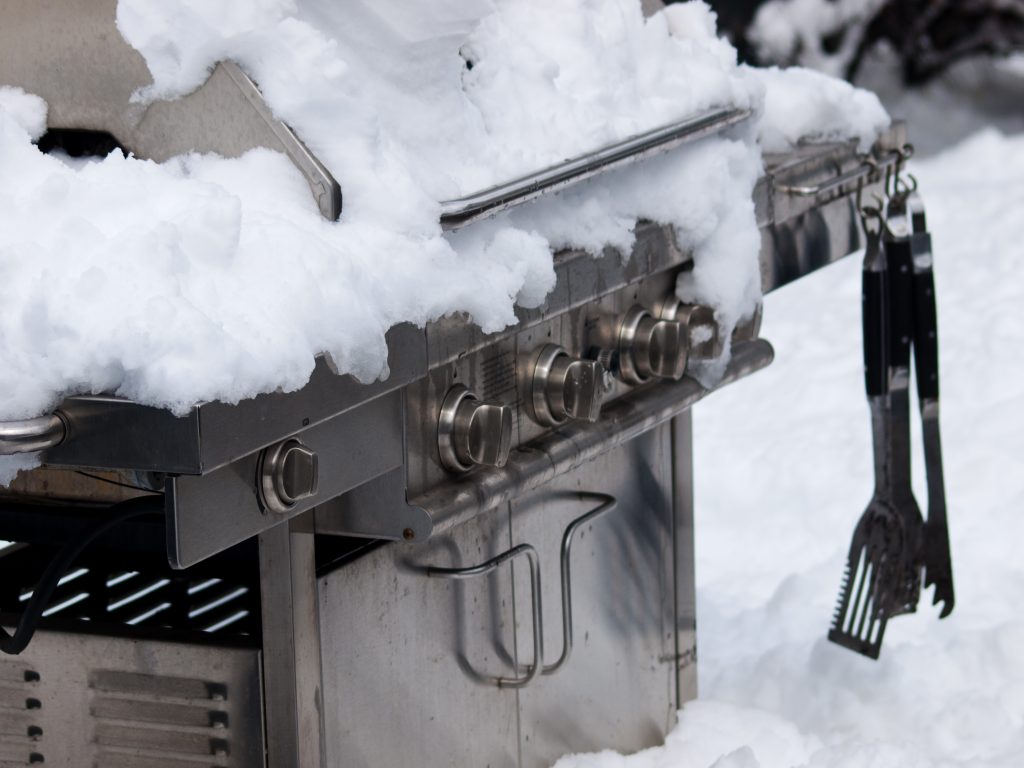
Storing and Preserving Food During Winter Storms
Bob from our previous article learned the hard way that cold cereal by candlelight doesn’t exactly put the “comfort” in comfort food. Meanwhile, Joe Prepper had hot pot roast ready to go. One of the biggest hassles during winter storms is preserving and preparing food when you might be lacking electricity or running water.
Stocking the Pantry
Rule of Thumb: Aim for at least two weeks of non-perishable food at home. If you’re more advanced in your prepping journey, a month (or more) is even better.
- Canned Soups, Stews, and Vegetables: They have a long shelf life and are easy to heat.
- Peanut Butter, Jerky, Trail Mix: High in protein and calories.
- Pasta, Rice, Beans: Shelf-stable carbs that will keep you fueled.
- Comfort Foods: Hot chocolate or instant coffee can keep morale high.
Make sure to rotate these items periodically, so you don’t wind up with expired goods.
Managing Refrigerated Foods
When the power goes out in the winter, you actually have a silver lining: it’s cold outside. If you have sub-freezing outdoor temperatures:
- Put Perishables in Coolers: Pack them with snow or ice to keep them below 40°F (4°C).
- Safe Placement: Keep them in a secure spot away from critters. Squirrels and raccoons would love your thawing chicken.
- Don’t Let Items Freeze Solid if You Don’t Want Them To: Certain items (like eggs or some produce) might not survive a freeze-thaw cycle very well.
Cooking Without Power
- Camp Stove: A small propane or butane stove can help you boil water and cook simple meals, but use it outside or in a well-ventilated area like a screened porch.
- Outdoor Grill: Not ideal during a blizzard, but workable if you have a covered area with open airflow. Be mindful of carbon monoxide.
- Wood Stove or Fireplace: Nothing beats cooking soup or chili in a cast-iron pot over a low flame.
Water Storage and Treatment
Aim for 1 gallon of water per person per day. But in winter, your typical water sources might freeze up or get contaminated. Here’s what you can do:
- Fill the Bathtub: A full tub of water can be used for washing or flushing toilets. Keep a container of unscented bleach around for purification if needed.
- Water Heater Reserve: If your lines are down but you still have an intact water heater, you can drain that water (just remember to shut off the intake if you suspect contamination).
- Melting Snow: If you must, melt snow in a large pot. Bring it to a rolling boil to kill bacteria. Snow can contain debris, so filter it through a clean cloth first if possible.
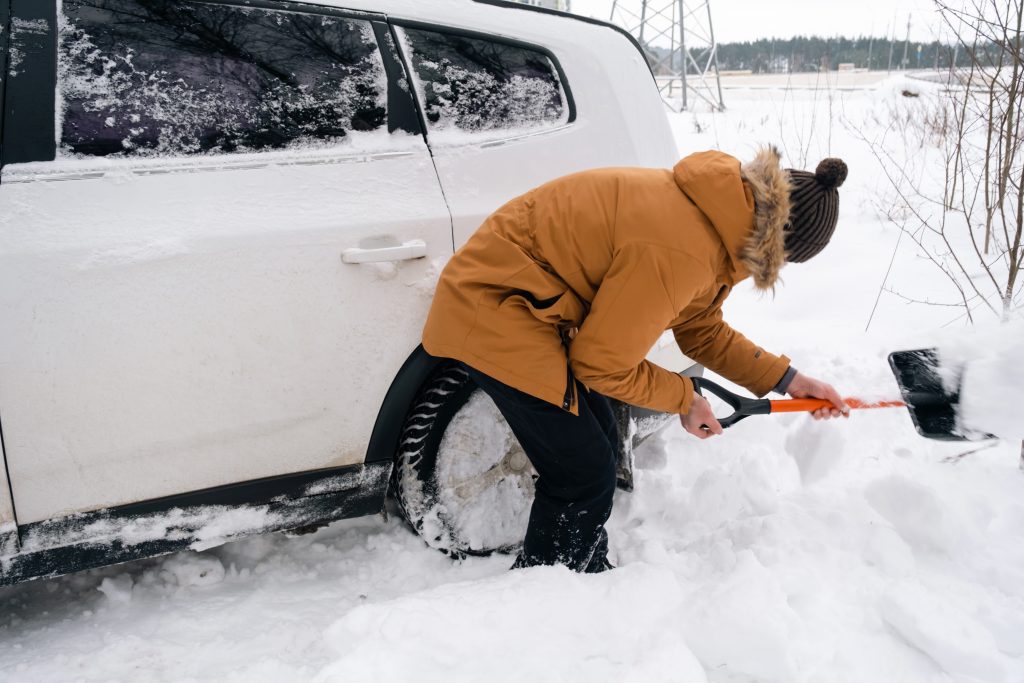
Staying Safe on the Road and in Your Vehicle
Winter travel can be risky business. Whether you’re commuting to work, visiting relatives, or just making a grocery run, sliding off an icy road can ruin your day—or your week, if you end up stranded.
Vehicle Preparation
- Winter Tires or Chains: If you live in a place known for heavy snowfall or black ice, make the investment. All-season tires aren’t always enough.
- Fluids: Top off antifreeze, keep your windshield wiper fluid rated for low temperatures, and always maintain proper oil levels.
- Battery Health: Cold weather drains batteries. Make sure yours is tested and in good shape, or carry a jump starter pack.
- Full Gas Tank: When the temps plunge, condensation in a near-empty tank can freeze your fuel line. Also, you don’t want to run out of heat if you get stuck.
Emergency Car Kit
A bare minimum kit should include:
- Blankets or Sleeping Bags: Hypothermia can set in quickly if you’re stuck with no heat.
- Jumper Cables or Jump Pack: Getting stranded with a dead battery isn’t fun.
- Shovel: Small collapsible shovels do wonders if you’re stuck in a drift.
- Tire Traction Aids: Sand, kitty litter, or traction mats can help you escape a slippery rut.
- Flashlight: Preferably a hand-crank or with spare batteries.
- Snacks and Water: High-calorie bars, jerky, nuts, and bottled water.
- Flares or Reflectors: To signal for help or warn passing cars.
If You Get Stranded
The general rule of thumb: Stay with your vehicle unless you have a definitive reason to leave (like immediate danger or if you can visibly see safety close by).
- Run the Engine Intermittently: About 10-15 minutes per hour to warm up, keeping the exhaust pipe clear of snow.
- Crack a Window: Prevents the buildup of carbon monoxide in the cabin.
- Signal for Help: Use hazard lights, raise the hood, or tie a bright cloth on your antenna.
- Stay Warm: Layer up, move your hands and feet to keep blood flowing, and conserve energy.
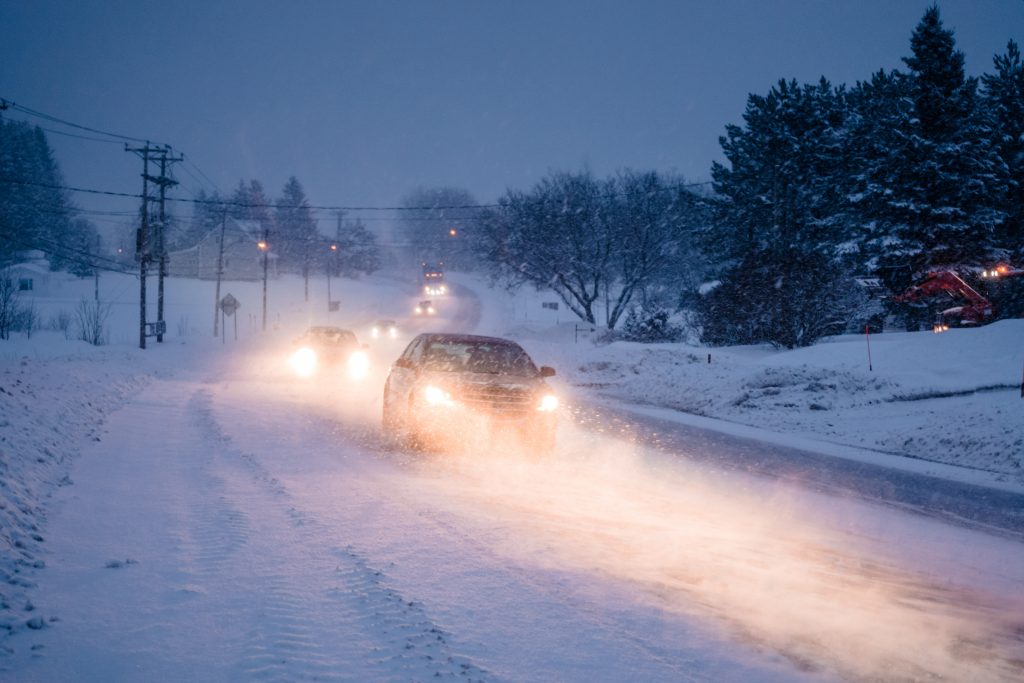
Managing Power Outages in Winter
If you haven’t read our previous piece on dealing with power outages, now’s a good time to check it out—it’s a handy guide on how to avoid Bob’s misfortunes and aim to be more like Joe Prepper. I’ll summarize a few crucial points here, but that article has a lot more juicy details:
- Notify the Power Company: If you still have phone service or a UPS running your modem, let them know you’re in the dark.
- Protect Your Electronics: Turn off or unplug anything you don’t need. Leave one light on so you’ll know when the juice is back.
- Layer Up and Huddle Together: Get everyone into one insulated room. Use blankets, sleeping bags, and body heat to stay warm.
- Avoid Candle Hazards: They’re okay for light (if used safely and not left unattended), but not for heat.
- Plan for Food Safety: Once perishable food hits 40°F (4°C), it’s time to cook it or toss it.
If you do happen to have a generator (or want to invest in one), you can extend your comfort significantly. Just keep safety in mind: run it outside (far from windows) to avoid carbon monoxide buildup, and keep your fuel properly stored.
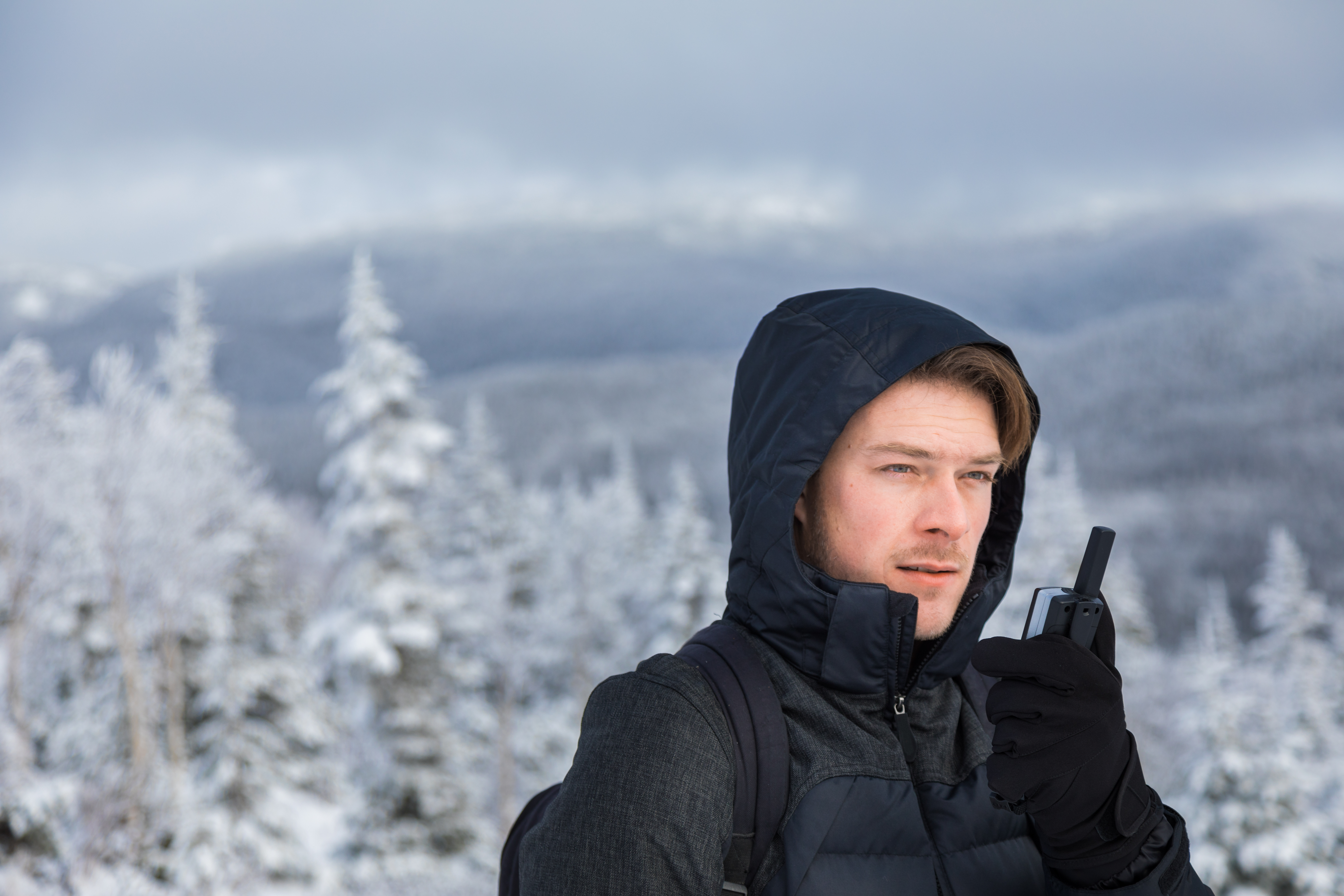
Staying Informed: Communication and Community Support
Staying informed is half the battle in any crisis, especially in winter. Being caught off guard because you didn’t know a storm was coming is a fast track to trouble.
Weather Updates and Alerts
- NOAA Weather Radio: A battery-powered or hand-crank NOAA radio can be a lifesaver if cell service is spotty.
- Smartphone Apps: Weather alerts, radar maps, and community warnings are helpful—assuming your battery and data connection hold out.
- Local News and Social Media: Keep an eye on school closings, travel advisories, and local event cancellations.
Communication Tools
- Cell Phones: Keep them charged, and use power-saving mode if you suspect you’ll be offline for a while.
- Chargers and Power Banks: Solar chargers or portable power stations can keep devices alive.
- Two-Way Radios: Great for short-range communication if cell towers are down or overloaded.
Networking with Neighbors
- Mutual Aid: Know which neighbors have special needs (elderly, medical conditions). Helping them out can strengthen community bonds and might even save a life.
- Resource Sharing: If you have a generator and they have a wood stove, you can share resources.
- Neighborhood Watch: Keep an eye out for suspicious activity during extended outages or storms (looters, opportunistic thieves).
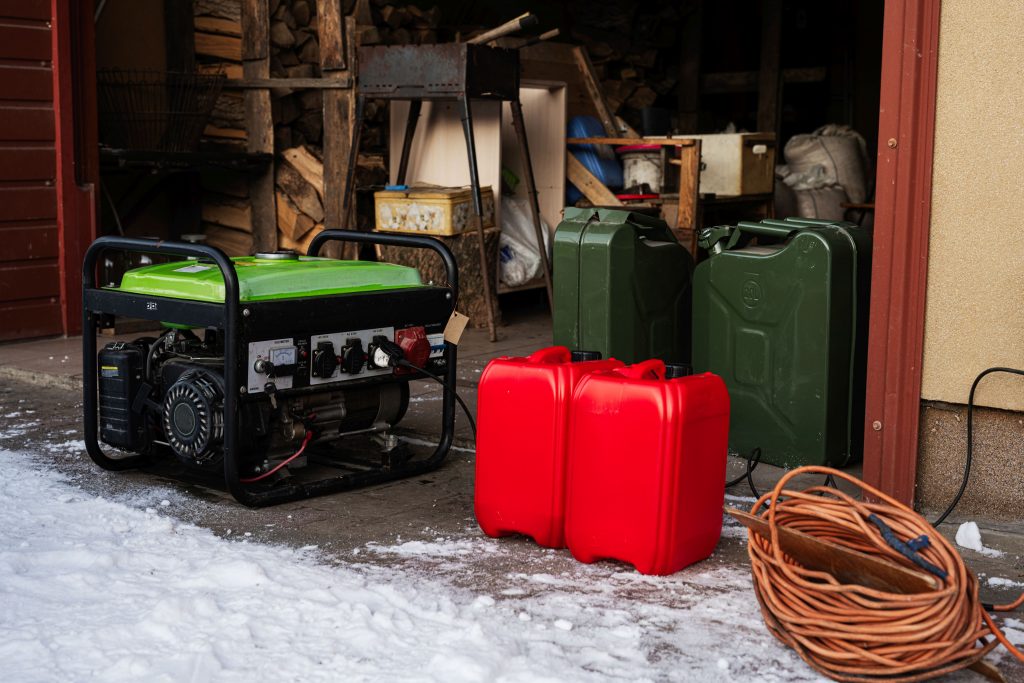
Long-Term Winter Preparedness: Generators, Solar, and More
If you’re the kind of person who wants to do more than just “get by,” there are plenty of investments and upgrades you can consider to truly winterize your home and your routine. Call it a “deep prep” for winter. Here are some avenues to explore:
Generators
- Portable Gas Generators: Affordable and easy to store, but can be noisy and require steady fuel.
- Whole-House Generators: Hooked into your natural gas line or large propane tank. More expensive but can keep your entire home powered.
- Maintenance: Run your generator at least once a month or so, and keep extra oil and filters on hand.
Alternative Energy Systems
- Solar Power: While solar production dips in winter, a rooftop array plus a battery bank can still keep essential electronics running (like the blower on your wood stove).
- Wind Turbines: Certain areas are better suited for wind power. It’s more niche but can be a game-changer in the right climate.
- Micro-Hydro: If you’re lucky enough to have running water on your property, a small hydro system can keep you powered year-round—assuming it doesn’t freeze over.
Off-Grid Heating Solutions
- Hydronic Heating: Radiant floor heating systems paired with solar-heated water can reduce your reliance on electricity.
- Geothermal Systems: If you can afford the initial investment, geothermal can maintain stable indoor temperatures regardless of outdoor weather.
Seasonal Supply Rotation
- Stock Up in Fall: Fresh batteries, new containers of propane or kerosene, and a check on your non-perishables.
- Check Your Vehicle Emergency Kits: Rotate out the snacks and water. Ensure your shovel isn’t rusted through and your traction aids are ready to go.
- Inspect Roof and Gutters: Clear out leaves and debris to reduce ice dams. A collapsible roof rake can help you remove heavy snow.
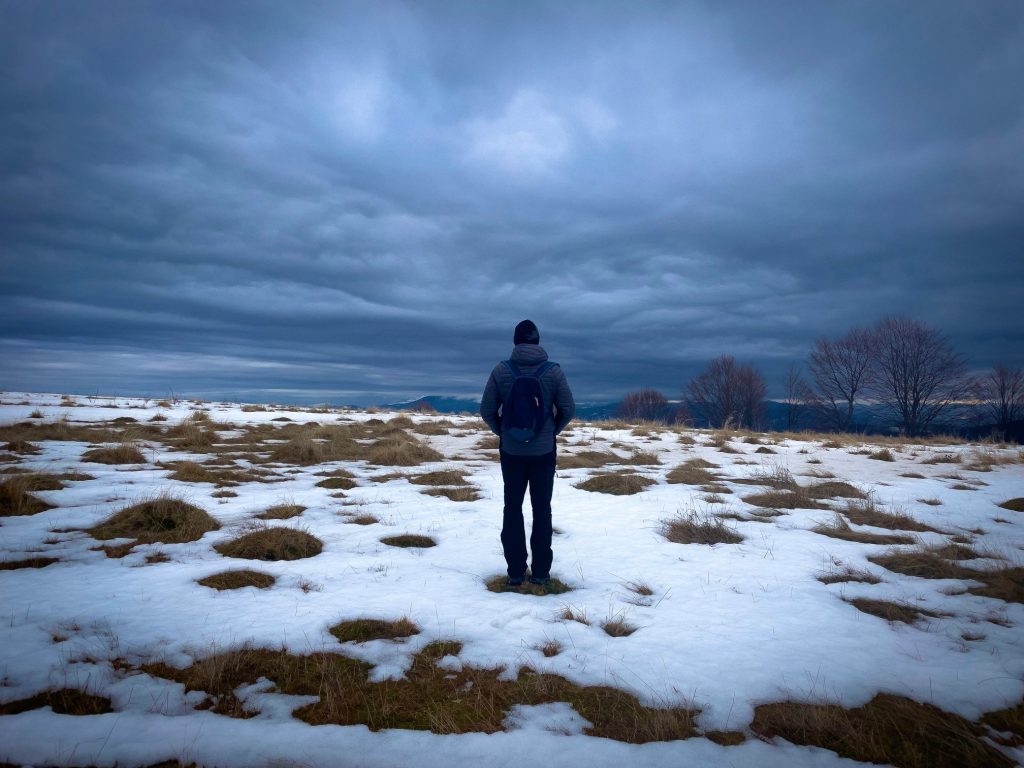
Mental and Emotional Resilience During a Winter Crisis
Being cooped up for days in a cold, dark house can wear on your nerves, no matter how tough you think you are. Boredom, anxiety, and cabin fever can set in fast when there’s a raging storm outside.
Coping with Isolation and Cabin Fever
- Activities and Entertainment: Board games, books, card games—anything to keep the mind busy and off worst-case scenarios. Don’t underestimate a good deck of cards.
- Routine and Structure: Even if you’re stuck at home, keep a schedule. Wake up at the same time, have designated meal times, and plan daily tasks to stay productive.
- Communication: Check in on relatives and friends by phone or radio if possible. Sometimes just talking to someone can reduce stress.
Involving the Whole Family
- Household Roles: Let each family member take responsibility for something—like checking the fireplace, layering up the kids, or monitoring the NOAA radio.
- Learning Opportunities: Use downtime to teach your kids (or yourself) new survival skills, like safely lighting a fire, basic first aid, or cooking on a camp stove.
- Emergency Drills: Don’t wait until an actual disaster hits to practice. Even a quick run-through of “the power just went out” can highlight weaknesses in your plan.
Maintaining Perspective
It’s easy to spiral into worst-case thinking. Remember: storms eventually pass, roads get cleared, and power gets restored. Keeping a cool head and a sense of humor can help you weather the storm—pun intended.
Conclusion: Being Proactive Beats Being Caught Off-Guard
Winter weather, for all its beauty, can be downright brutal. Between ice storms that weigh down power lines, unexpected blizzards that close highways, and temperatures cold enough to freeze a brass monkey, there’s no shortage of threats lurking outside your cozy living room. But each challenge winter throws at you becomes a lot more manageable when you’ve identified it ahead of time, taken proactive steps to prepare, and stayed informed about what’s happening around you.
Remember the difference between Bob and Joe Prepper from our power outage article? Bob stumbled around in the dark without batteries, while Joe enjoyed a warm meal with the lights still on (thanks to his UPS and preparedness). When faced with winter hazards—burst pipes, black ice, or a major ice storm—do you want to be the guy who’s complaining about the cold while rummaging for a half-burned candle in the junk drawer? Or do you want to be the neighbor who has enough backup heat and supplies to help others, let alone yourself?
Be the Joe Prepper. Stock up on your “blizzard blankets” and emergency rations. Keep your vehicles winter-ready and your home well-insulated. Practice good sense when it comes to carbon monoxide, cooking outside, and layering your clothing to avoid hypothermia. Check in on neighbors and loved ones, because the best-prepared communities are the ones that work together.
Winter is coming (or already knocking at the door), and it doesn’t ask if you’re ready. But if you’ve followed the tips in this article—plus the ones in our power outage piece—you’ll be in a far better position than most. Take those small steps now, and your future self will thank you when the ice starts forming on every tree branch in sight.
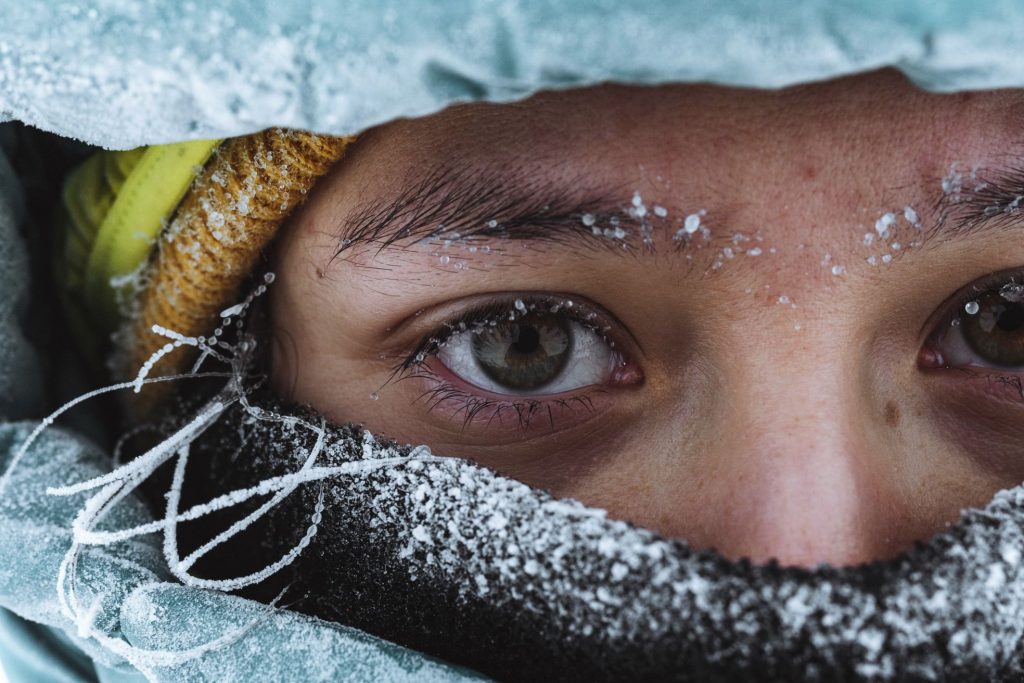
Final Word: Start Prepping Now
Don’t wait for the next newscast to announce an incoming storm before you dash to the store for supplies. By then, the shelves might be empty, and you’ll be on the losing side of the panic scramble. Instead, make a list of what you need—extra water, freeze-proof your pipes, fresh batteries, a reliable radio—and start checking items off as soon as you can.
Winter storms can be tough, but your spirit and readiness can be tougher. Be proactive. Be smart. Stay warm, stay safe, and stay informed. And when the snow drifts higher than your mailbox, you’ll be the one calmly sipping coffee by the glow of your wood stove, your emergency radio tuned to the weather channel, and your family safe under warm blankets.
Remember, we can’t promise your significant other won’t nag you if you forget something important—but at least you’ll have the heat, lights, and a decent meal to soften the blow.
Stay prepared, stay vigilant, and stay warm out there!
